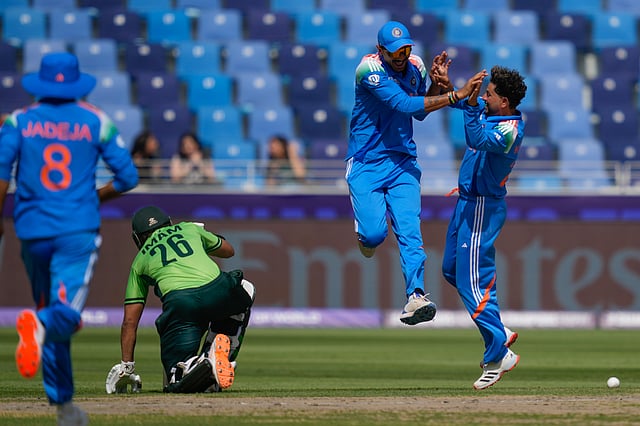
Gold Prices Drop Rs 12,700 from Peak: What the 2025 Gold Price Crash Means for Investors
Introduction: Gold Price Fall in India 2025
Gold — long considered a timeless symbol of wealth and financial safety — has taken an unexpected dip this season. After reaching record highs earlier in the year, gold prices in India have now dropped sharply by about ₹12,700 per 10 grams from their peak, leaving both investors and buyers puzzled.
On the Multi Commodity Exchange (MCX), gold had surged to an unprecedented ₹1,32,294 per 10 grams. However, current trading levels show it hovering near ₹1,19,605 — a decline of nearly 9.6%. This sudden fall has sparked wide discussion in the market: is India witnessing the beginning of a gold price crash, or is this a valuable chance to “buy the dip”?
Here’s a closer look at what’s causing the decline, expert opinions on the trend, and whether now is the right time to invest or hold back.
Why Have Gold Prices Fallen So Sharply?
1. Global Economic Developments
The first major reason behind the gold price crash in India 2025 is global economic sentiment. Optimism around trade developments between the US and China has reduced the need for investors to seek “safe haven” assets like gold.
Whenever global tensions ease, money flows away from gold into riskier assets such as equities and bonds, leading to a correction in gold prices.
2. The Federal Reserve Factor
Gold prices often move inversely to the US dollar and interest rates. The Federal Reserve’s recent policy stance has influenced global gold prices. If the Fed signals a hawkish tone — meaning higher interest rates — investors tend to prefer dollar assets, putting downward pressure on gold.
Analysts believe the latest correction is partly due to expectations that the Fed may maintain or even increase rates in the short term.
3. Profit Booking and Market Sentiment
After months of a rally in precious metals, several traders have chosen to book profits near record highs. This wave of selling adds momentum to the downside, amplifying the price drop.
Experts note that short-term traders are exiting positions, while long-term investors may soon step in to accumulate gold at lower prices.
4. Domestic Currency and Demand Factors
In India, gold prices also depend heavily on the rupee’s strength, import duties, and domestic demand. A relatively stable rupee and weak festive buying have temporarily slowed local demand, contributing to the recent correction.
However, experts believe any further fall could revive demand from both jewellers and retail investors, especially as the wedding and festival season approaches.
Technical View: Where Is Gold Headed Next?
Market analysts are watching some critical levels on the charts:
- Support Level: ₹1,17,000–₹1,18,000 per 10 grams
- Resistance Level: ₹1,21,000–₹1,22,000 per 10 grams
- Global Support: Around US$3,870 per ounce
If prices hold above ₹1,17,000, a rebound could follow. But if that level breaks, a deeper correction toward ₹1,15,000 cannot be ruled out.
In global markets, gold is expected to trade between US$3,870 and US$4,280 per ounce in the near term. Silver, too, is seeing a similar trend, fluctuating between US$45.5 and US$51.5 per ounce.
Two Sides of the Coin: Crash or Opportunity?
A. The Bearish View – Is a Bigger Crash Coming?
Some market observers warn that this could be the beginning of a prolonged downturn. The logic is simple:
- If global growth strengthens and inflation cools, the safe-haven demand for gold will fade.
- A stronger US dollar and higher bond yields could continue to put pressure on gold prices.
- Technical indicators also suggest weakness if key supports break.
Short-term traders are advised to remain cautious and maintain stop-loss levels in this environment.
B. The Bullish View – A Golden Buying Opportunity
Contrary to the bears, many long-term investors and fund managers see this as a golden buying opportunity. Here’s why:
- Inflationary pressures are still not fully under control globally.
- Central banks, including India’s, continue to add gold to their reserves.
- Gold remains a strong hedge against currency depreciation and economic uncertainty.
- Historically, corrections of 8–10% have often led to new uptrends.
Hence, those with a 2–3 year horizon may consider accumulating gold gradually, especially if prices drop further.
What Should Investors Do Now?
1. Identify Your Goal
If you are investing for short-term trading, stay alert to technical levels.
If your goal is wealth preservation, long-term diversification, or hedging inflation, this dip might be your chance to accumulate.
2. Invest Through Safe Channels
- Gold ETFs (Exchange-Traded Funds): Provide flexibility, liquidity, and low storage costs.
- Sovereign Gold Bonds (SGBs): Offer both capital appreciation and interest income, making them a smart choice.
- Physical Gold: Best for jewellery buyers and those looking for tangible investment.
3. Diversify, Don’t Overexpose
Financial experts recommend keeping 5–10% of your total portfolio in gold. Overexposure can limit returns during strong equity market phases. Use gold as a hedge, not a core growth asset.
4. Keep an Eye on Key Triggers
Several global and domestic events could influence gold prices in the coming weeks:
- Federal Reserve policy announcements
- US inflation data
- India’s festival season demand trends
- Global political developments
Any sudden rise in geopolitical tensions or dovish statements from the Fed could spark a quick rebound in gold prices.
India’s Cultural Connection to Gold
Gold in India is more than just an investment; it’s a sentiment. Whether it’s for weddings, festivals like Diwali, or Dhanteras, gold continues to hold emotional and cultural significance.
Historically, every dip in gold prices has led to strong consumer buying. With prices now below ₹1.2 lakh per 10 grams, jewellers are expecting higher demand in the coming festive months.
If this trend holds, domestic buying could stabilize prices and even trigger a rebound toward ₹1.25 lakh levels again.
Long-Term Outlook for Gold in 2025–2026
Over the next 12–24 months, most analysts remain moderately bullish on gold. Here’s why:
- Central banks worldwide are increasing gold reserves to reduce dependence on the US dollar.
- Inflation remains a concern in several economies, making gold a valuable hedge.
- Limited new supply and rising industrial demand (for example, in electronics and solar) could support long-term prices.
- Indian demand traditionally strengthens in the second half of the year, thanks to festivals and marriage seasons.
If global uncertainty returns — whether due to elections, oil price volatility, or recession fears — gold could easily reclaim its previous highs or even go beyond ₹1.35 lakh per 10 grams.
What’s the Right Move?
The recent gold price crash in India 2025 has certainly shaken short-term traders, but long-term investors might see it differently.
If you’re a trader — follow stop-loss levels and avoid catching a falling knife.
If you’re a long-term investor — this may be your chance to accumulate gold slowly at attractive levels.
With support around ₹1,17,000 and strong fundamental demand in India, gold is unlikely to remain weak for too long. Experts recommend “buying in phases” instead of going all in at once.
In the end, whether it’s a crash or a correction, gold continues to shine in the long run — a timeless asset that rewards patience and diversification.

